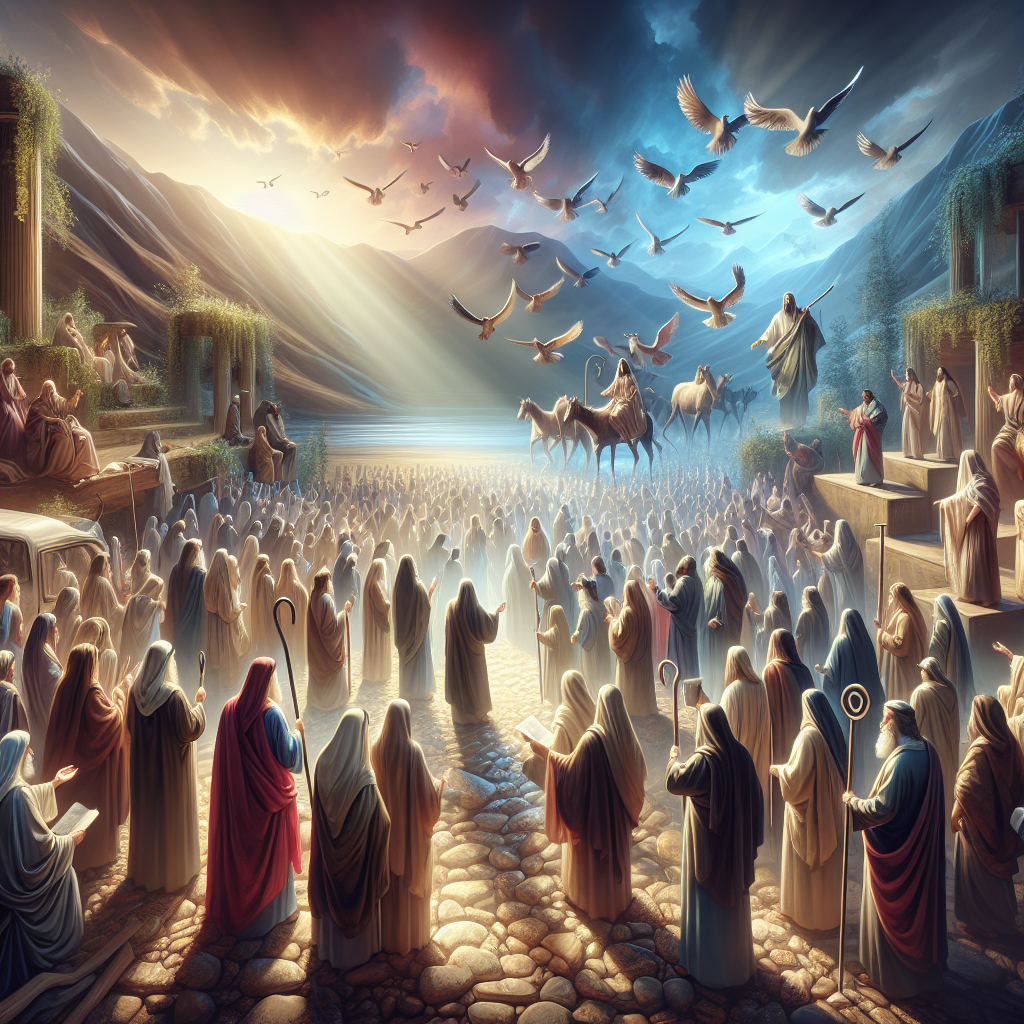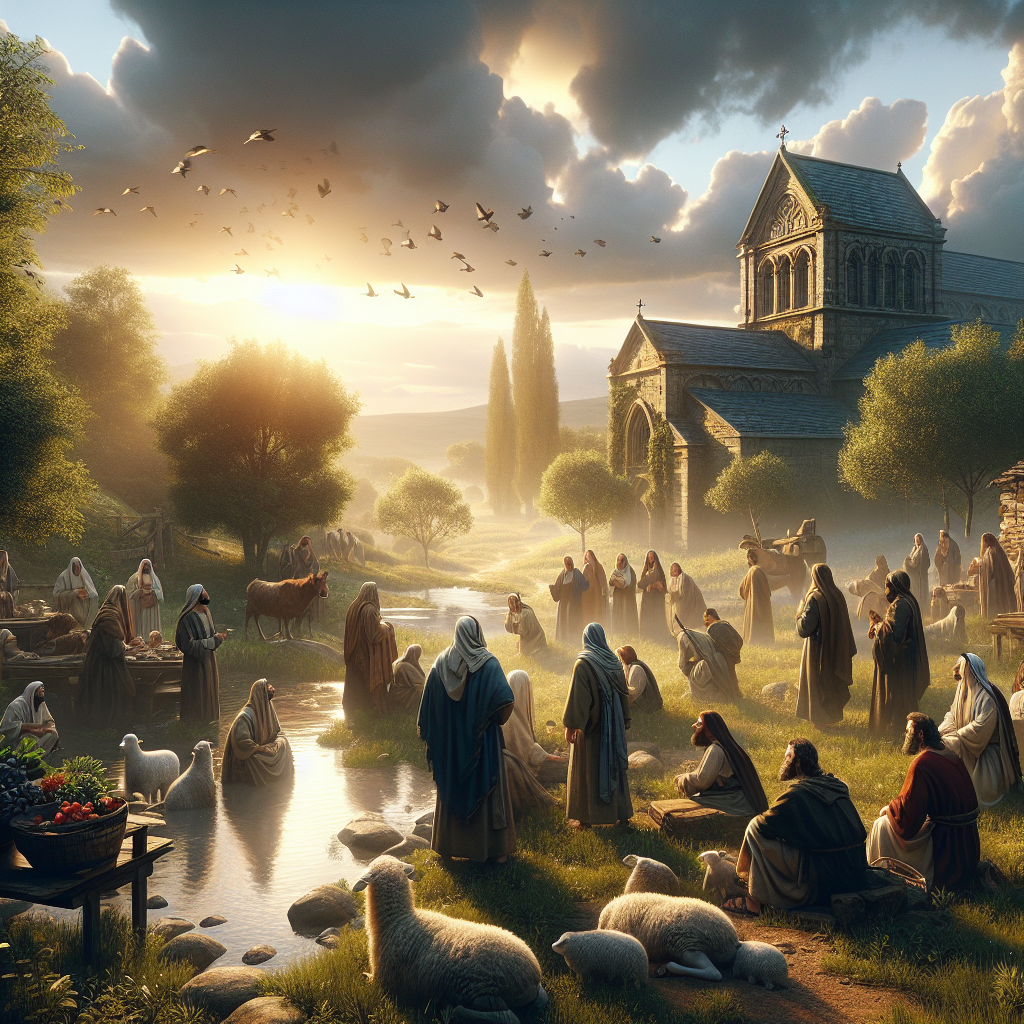Art has been a powerful medium for centuries, serving as a canvas for creativity, expression, and storytelling. One of the most intriguing aspects of art is its ability to bring to life ancient narratives and religious stories, captivating audiences with visually compelling renditions of age-old tales. In this editorial piece, we explore the fusion of faith and art, delving into how artists throughout history have depicted biblical stories, infusing them with emotion, symbolism, and meaning.
The Intersection of Faith and Art
At the core of many great works of art are themes rooted in faith, and biblical stories have provided a rich source of inspiration for artists across different cultures and time periods. From the iconic paintings of the Renaissance to contemporary installations, the depiction of biblical narratives has been a central pillar of artistic expression. Artists have skillfully translated the moral lessons, spiritual teachings, and human dramas found in the Bible into visual masterpieces that resonate with viewers on a profound level.
Symbolism and Interpretation
One of the fascinating aspects of art inspired by biblical stories is the use of symbolism to convey deeper meanings and interpretations. Take, for example, the famous painting of the Last Supper by Leonardo da Vinci. Beyond depicting the event itself, da Vinci's masterpiece is laden with symbolic elements that allude to betrayal, sacrifice, and redemption. The positioning of the figures, the play of light and shadow, and the expressions on the faces of the disciples all contribute to a layered narrative that extends beyond the surface imagery.
Emotion and Drama
Biblical stories are often rife with emotion, drama, and human complexity, making them ripe for artistic exploration. Artists have captured the intensity of these narratives through their brushstrokes, sculptures, and other artistic techniques, bringing to life the poignant moments of joy, sorrow, courage, and despair that define these stories. Whether it's the anguish of Mary at the crucifixion of Jesus or the triumph of David over Goliath, artists have imbued their works with raw emotion and visceral impact, inviting viewers to engage with the stories on a visceral level.
A Reflection of Culture and Belief
The depiction of biblical stories in art also serves as a reflection of the cultural and religious beliefs of the societies in which the art was created. Each artist brings their unique perspective, worldview, and artistic style to their interpretation of these timeless stories, resulting in a diverse tapestry of representations that speak to the broader cultural context in which they were produced. As such, the evolution of biblical art over the centuries mirrors the changing attitudes, values, and beliefs of societies throughout history.
Contemporary Perspectives
In the modern era, artists continue to draw inspiration from biblical stories, reimagining them through new artistic mediums and innovative approaches. From multimedia installations to street art, contemporary artists are pushing the boundaries of traditional biblical art, offering fresh interpretations and challenging established conventions. By blending traditional narratives with modern aesthetics, these artists are breathing new life into age-old stories, inviting viewers to see them through a contemporary lens.
The Legacy of Biblical Art
As we reflect on the enduring legacy of biblical art, it becomes clear that the intersection of faith and art is a rich and fertile ground for creative expression. Through their works, artists have not only preserved and celebrated biblical stories but have also engaged with them in profound ways, inviting audiences to explore the deeper meanings and universal truths embedded within these narratives. Whether in the hallowed halls of museums or the bustling streets of urban centers, art inspired by the Bible continues to captivate and inspire, reminding us of the enduring power of storytelling and creativity.

In Conclusion
The fusion of faith and art has resulted in some of the most iconic and enduring works of artistic expression in human history. By delving into biblical stories, artists have tapped into a wellspring of inspiration that transcends time, culture, and geography. As we gaze upon the masterpieces that adorn galleries, churches, and public spaces, we are reminded of the timeless relevance of these stories and the profound impact they continue to have on our collective imagination. Through art, we find a bridge that connects us to the past, present, and future, inviting us to explore the depths of our faith and creativity in ways that are both profound and transformative.

In a world filled with noise and distractions, the contemplation of biblical art offers a moment of respite, reflection, and spiritual nourishment. As we immerse ourselves in these visual narratives, we are invited to ponder the timeless truths and eternal questions that have captivated humanity for generations. Through the lens of art, we find a glimpse of the divine, a ray of light that illuminates the path of our journey through faith and creativity.
With each stroke of the brush and chisel of the sculptor's tool, artists continue the age-old tradition of depicting biblical stories, infusing them with new life, meaning, and beauty. As we behold these works of art, we are transported into a world of wonder, mystery, and awe, where the boundaries between the sacred and the profane blur, and the extraordinary becomes ordinary. May we continue to seek inspiration in the stories of old, finding in them a wellspring of creativity and faith that will sustain us on our artistic and spiritual journey.

Comments